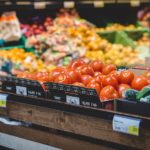 Most supermarkets today promote the charitable work they do in terms of donations to community food banks. Research from Northeastern highlights, however, how such seemingly altruistic gestures can in fact benefit the bottom line of the supermarkets.
Most supermarkets today promote the charitable work they do in terms of donations to community food banks. Research from Northeastern highlights, however, how such seemingly altruistic gestures can in fact benefit the bottom line of the supermarkets.
The research found that margins are usually wafer-thin in the grocery business, so a key source of profits is the blemish-free perishables on sale, such as fruits and vegetables, which can often go for 33% more than normal. The authors explain that supermarkets will often send edible, yet otherwise unsaleable products, to the food bank. This practice obviously benefits the food bank but also has implications for the inventory management at the retailer.
Lack of options
Often, retailers have few options for their unsaleable food. For instance, they could mark it down to try and increase the chance of a sale. This is often an imperfect solution, however, not least because it’s so labor-intensive. It’s also difficult for retailers to monitor supply and demand in real-time.
“Any store associate tasked with culling and pricing bananas, for example, will struggle to answer the question, ‘How do I price the banana with four brown spots relative to the one with eight or nine brown spots?’ the researchers say.
What’s more, this strategy runs the risk of the produce not selling, all the while it takes up shelf space from fresher items that could sell for a higher price.
Remove and replace
A more altruistic approach is to remove the produce from the shelf while it still looks okay, and donate it to a local food bank. This frees up the shelf space for fresher and higher-priced items. This means that when stores donate produce to food banks, they’re less likely to have low-quality produce on the shelves.
“This remove-and-replace effect offers the dual benefit of reducing the handling and outdating costs of degrading produce and increasing the average quality of food that remains on-shelf. Higher quality means higher prices,” the researchers explain.
If the retailer is able to remove low-quality and often unsaleable produce from the shelves at an early point, it also offsets any waste removal costs they may incur. As such, food donations aren’t just an altruistic gesture but also a smart commercial choice.
Currently, around 39 million people, including 12 million children, are struggling to have enough food to eat. Food banks are therefore a crucial part of the food supply chain, albeit a part that is often overlooked. The research shows that donating perishable food items can be a process that is as beneficial to the supermarkets as it is to the food banks themselves.
“For a food retailer, you never, ever want to miss a sale, especially one for a fresh, high-quality perishable item,” the researchers conclude.